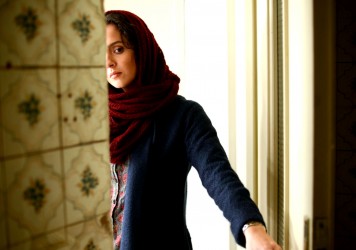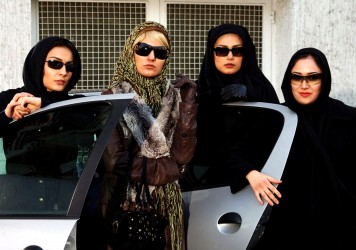There are no words. Sad face emojis will not suffice. Hastily posted photos of happier times offer no emotional balm. The king is dead. You cannot pithily encapsulate all that was great about the Iranian maestro Abbas Kiarostami in a couple of mere sentences. Adjectives aren’t worthy. One of the foremost cinema artists, a true original, a galvanising poet who toyed with the illusion of simplicity, who asked us to observe and wonder at the world as it is, has passed.
The feeling is one of catastrophe, as if an era has come to a close, as if the walls of cinema itself are tumbling in around us. The great filmmakers betray an air of omnipotence, we take for granted that they’ll always be there to deliver us the bounty of their work, that they’ll constantly be engaging with the landscape for the purposes of public interpretation. Yet such forlorn reminders of life’s finality are as bittersweet as Kiarostami’s films themselves.
Kiarostami’s movies, to me, remain mysterious objects. They’re gorgeous open texts which hold no message or moral, but capture what Paul Schrader once described as transcendence. They’re not about people or the world, but more about the invisible sinews connecting the two and the unseen interplay which creates balance. Life isn’t what’s happening to the people on screen, it’s the small, ecstatic, often unseen moments that, eventually, help to define it.
More so than most directors, Kiarostami was someone who believed that cinema offered a vision of the world that can’t be glanced by human eyes. We can see the things that people miss, or that they would actively chose not to look at or notice. We see an aerosol can roll down a hill in Close-Up, or a small flower pressed into a textbook in Where Is the Friend’s House? or a neon city as reflected in a car window in Like Someone in Love.
He was someone who was so in awe of the world (a tempered, rational awe), that he could locate stories anywhere, in anyone or anything. Give me the face of a woman and I’ll give you the world he seemed to say in 2008’s Shirin. His so-called ‘Koker trilogy’ saw him visiting the same rural site three times, first to tell a story (Where is the Friend’s House?), then to excavate that story from the ravages of an earthquake (Life and Nothing More) and then to return to ask whether any new stories can be told (Through the Olive Trees). He was a pioneer of digital technology, flipping the format’s aesthetic limitations into dazzling advantages in films like the dashboard confidential, Ten, and the quietly radical documentary ABC Africa. He was a political filmmaker also, producing trenchant critiques of contemporary Iranian society which where expressed through symbols and associations rather than brash declamations.
This willingness to talk with images made his films at once culturally specific and wholly universal, oblique and open, expressionistic and literal. His films are invigorating in a way that few others are, emotionally and intellectually rousing in equal measure. They will live on past the devastation of his death and become even more entrenched within film culture. They will remind critics why they fell in love with movies. They remind students why they wanted to make movies. They will remind philosophers of the profound mysteries of existence. They will remind poets of the ravishing beauty that consumes our every waking moment. They will remind children of basic moral life lessons. They will remind adults of the continuing importance of those very same lessons. They will remind everyone how to live, how to love, and – most importantly – how to see. RIP, to one of the masters.
Published 4 Jul 2016

The director of A Separation and The Past heads to the Cannes competition with another intricate domestic drama.

By Sarah Jilani
Despite facing severe restrictions Iran’s most important filmmakers continue to give its people a voice.